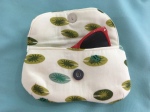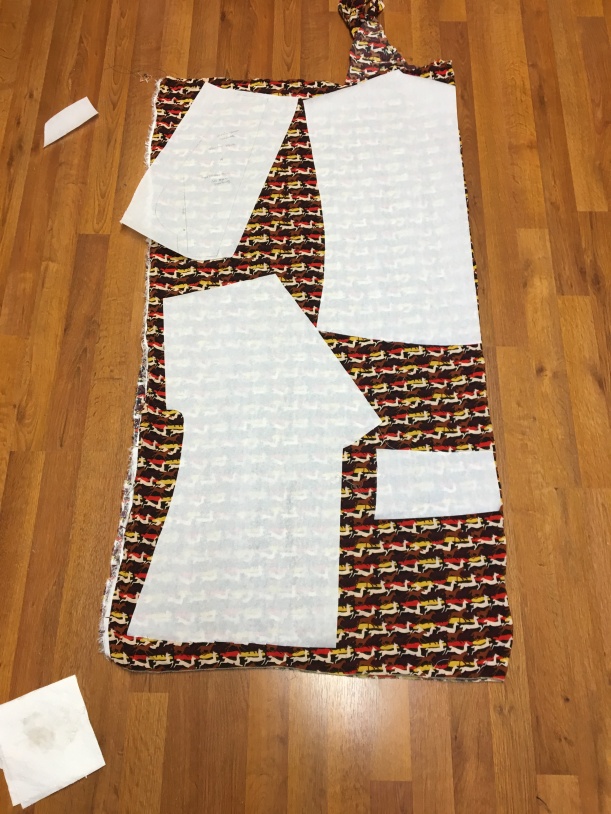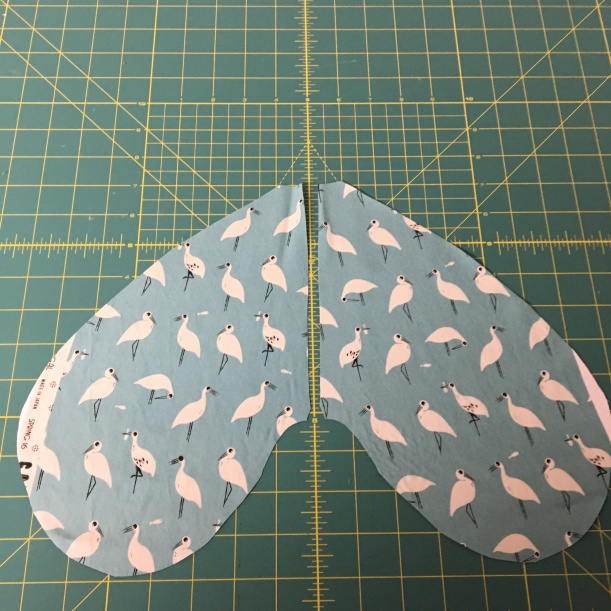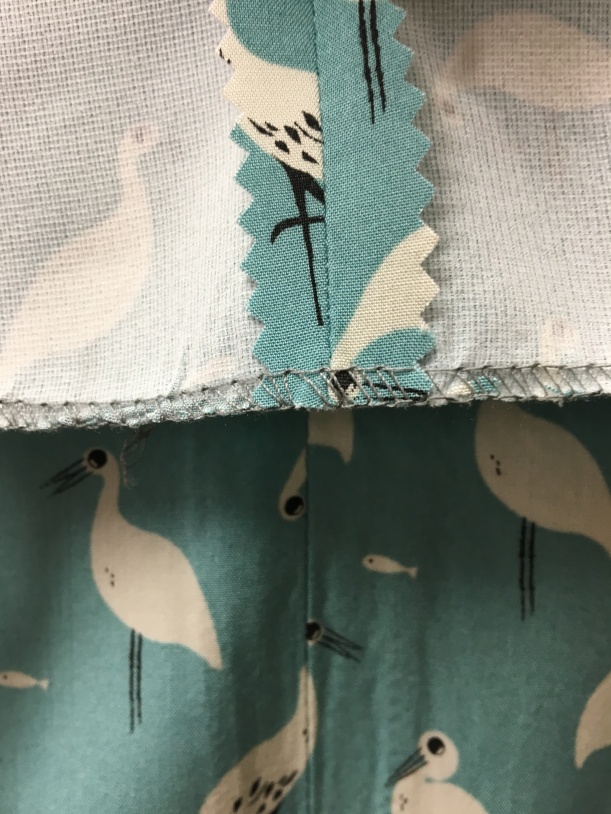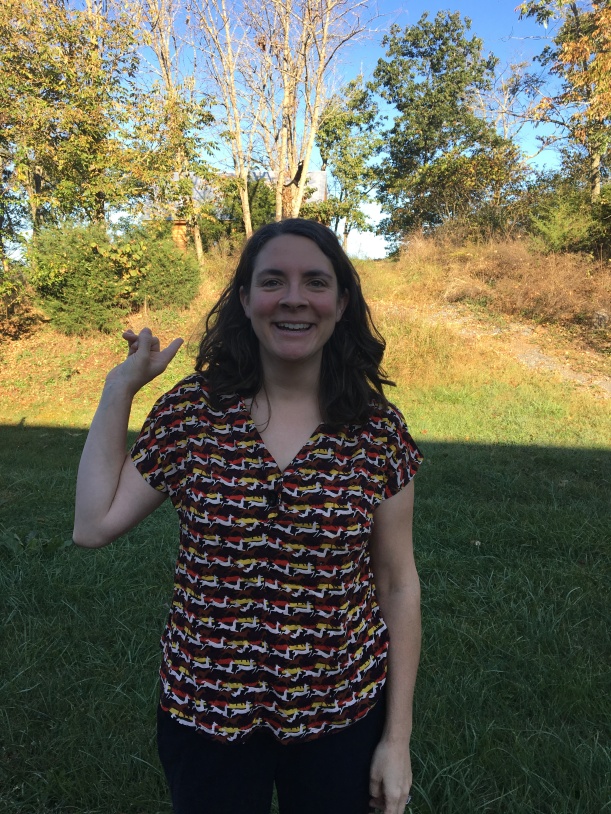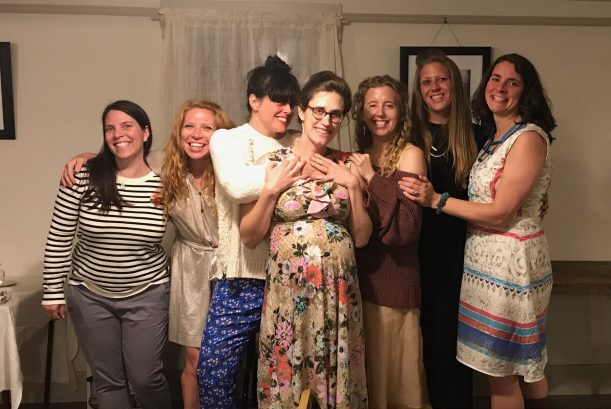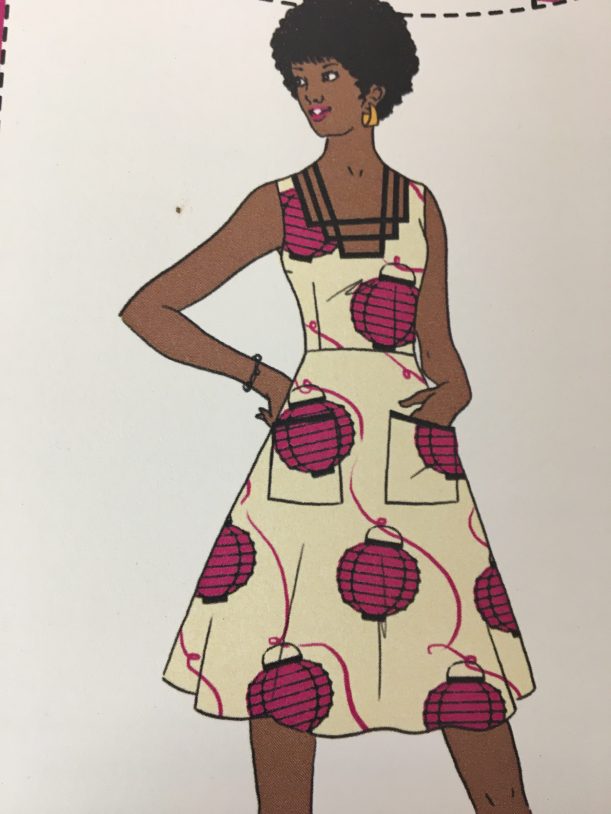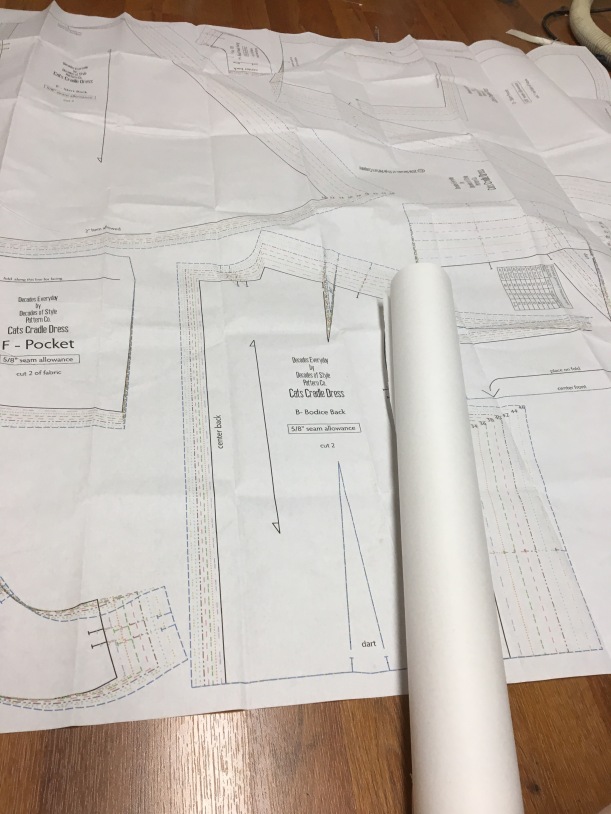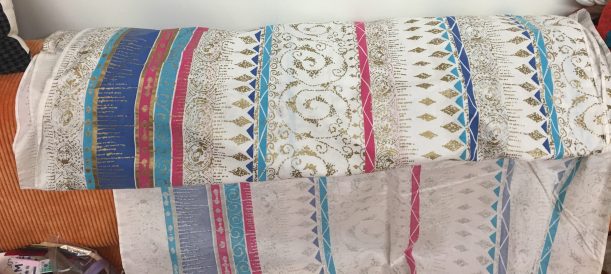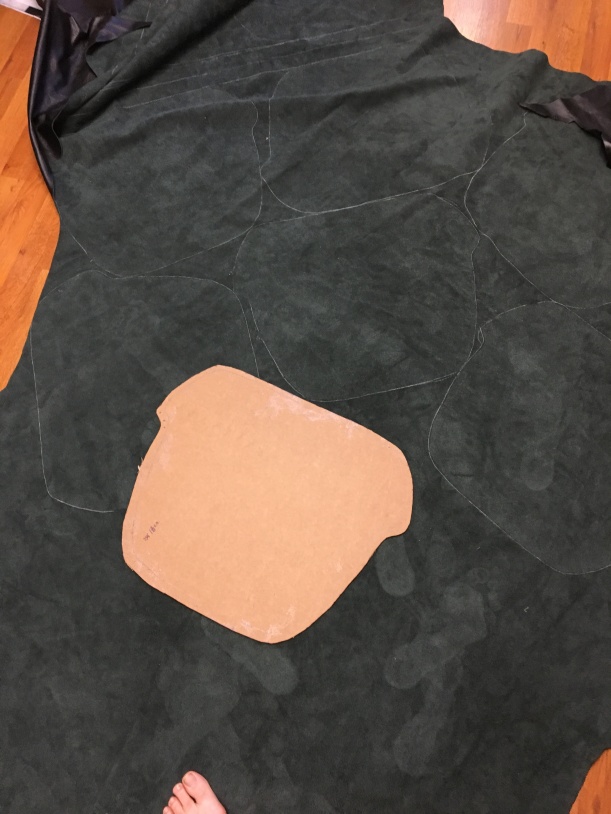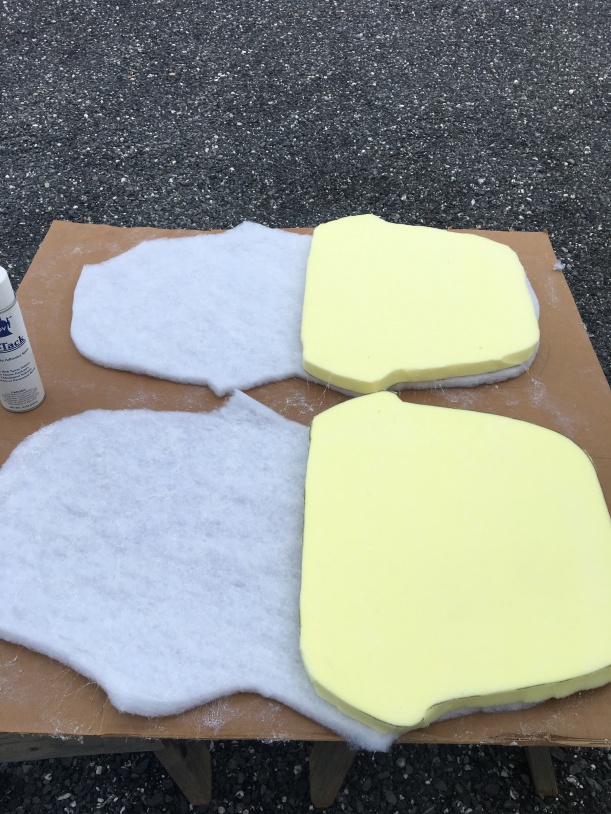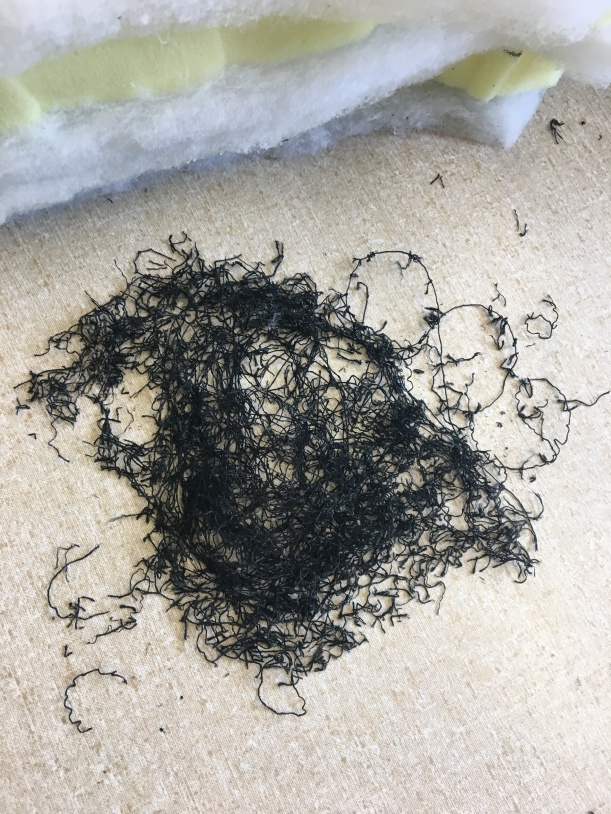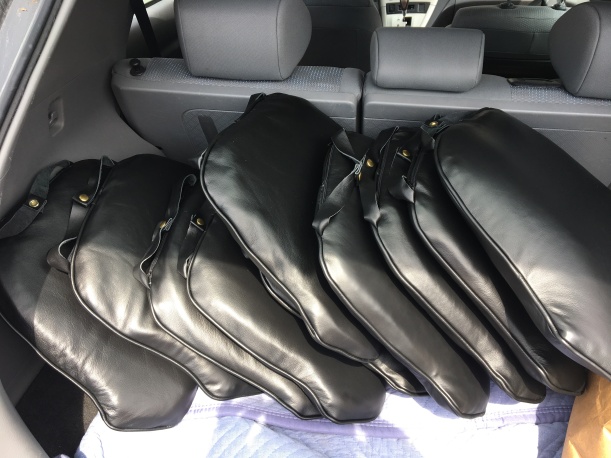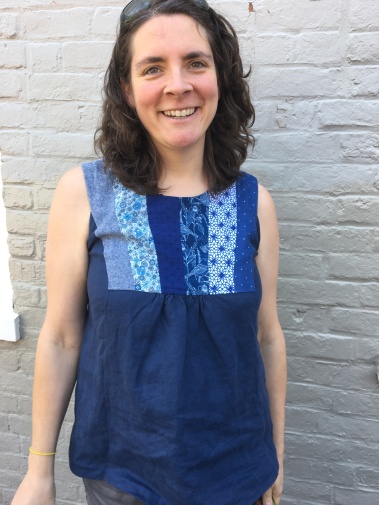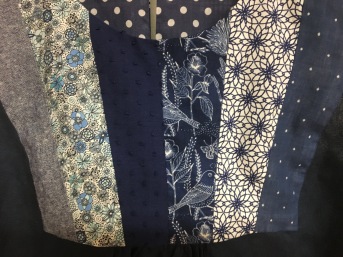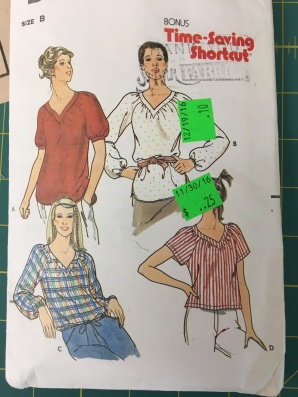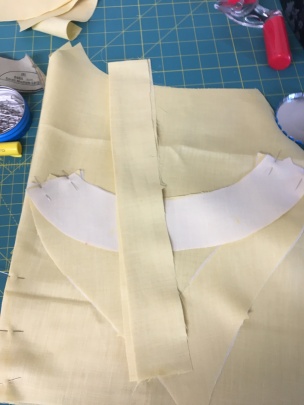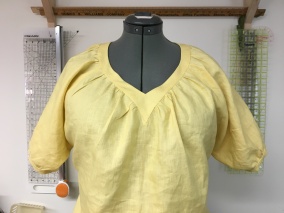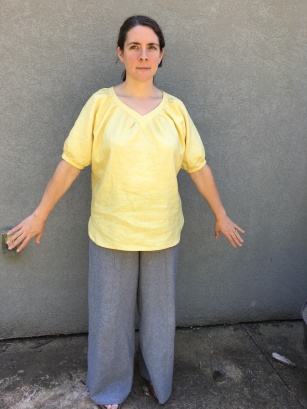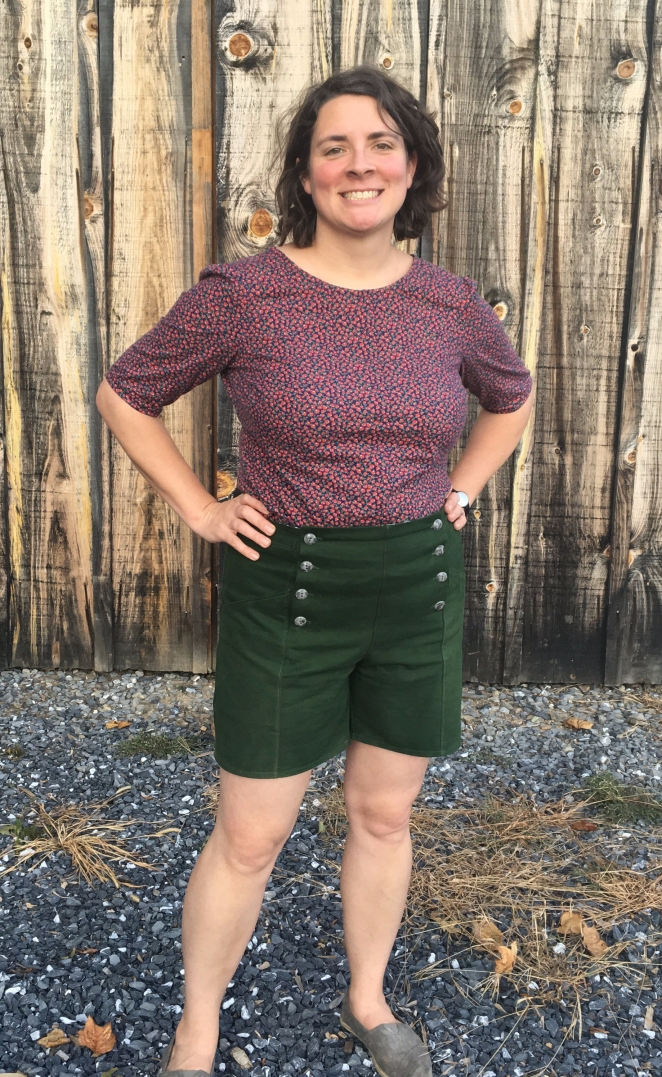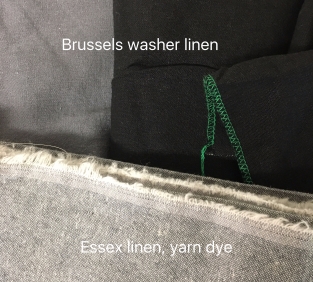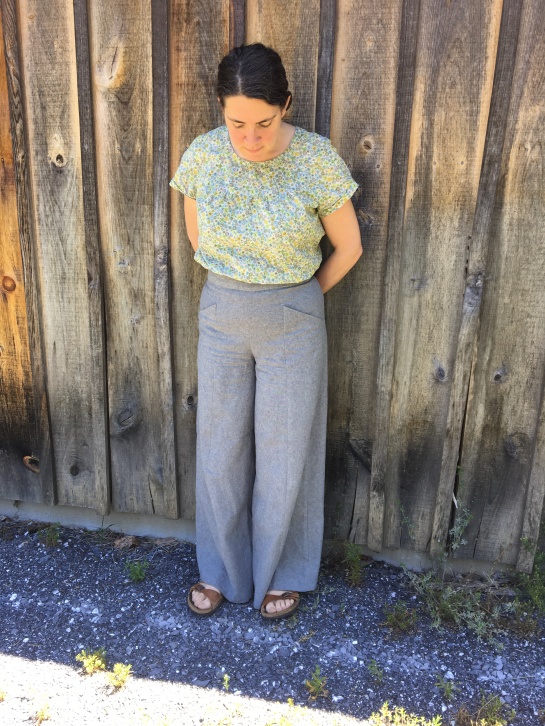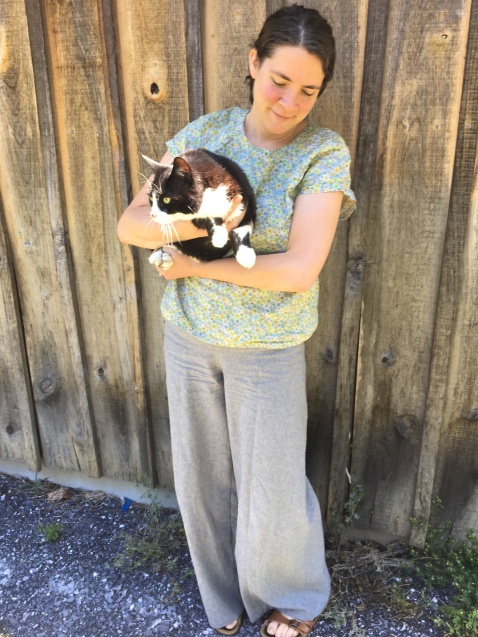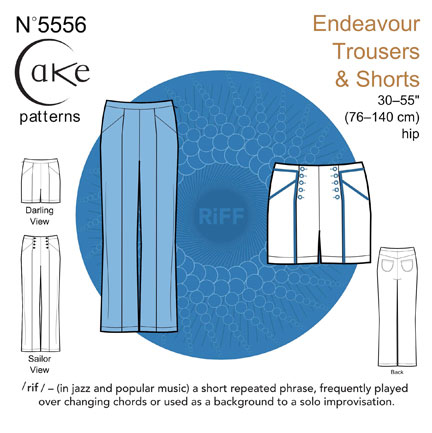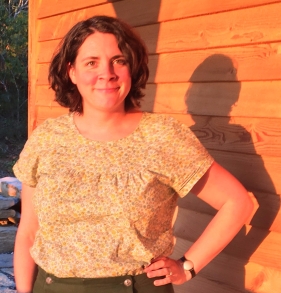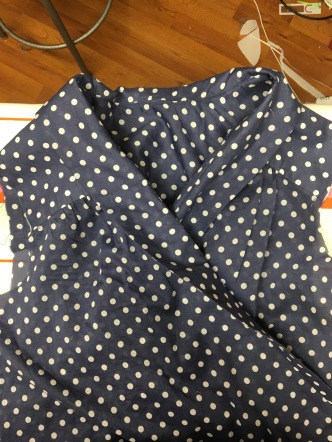Thanks for your interest in punsnneedles and thanks to those who have followed me. I’ve opened a shop and moved my blog to the shop’s website. If you’re interested, I encourage you to follow me over there. Latest post is at https://makeitsewva.com/2018/06/11/more-about-double-gauze/ and you can also find me on Instagram at @makeitsewva and Facebook too.
The birds and the … horses
I finally have a Jennifer Lauren Afternoon blouse. And an afternoon dress.
It’s a simple design with graceful lines that fit in to my vintage and modern sense of style. I’ve had my eye on the pattern for a while and having made it, I can now tell you it’s a good one. I’m usually a hater of non-functional buttons but in this case, it suits the dress well.
Based on my measurements, I chose to make a size 14 with a full bust adjustment. It took a little trial and error to get the bust dart in the right place, making me glad that I did a trial run.
My “muslin” or tester garment is the blouse version. Knowing I would make the dress in a lovely drapey rayon, I picked through my stash and found just enough of this horse print. When I bought the horse fabric several years ago, I thought it was “Italian Cotton,” but since then I have come to believe it’s rayon. It’s a bit flimsier than the Cotton + Steel bird fabric, but was close enough to check the fit.
Once I was happy with the fit — and really, that was no more work than the FBA— I extended the length. Extending the line from the new post-FBA side seam made the bottom portion approximately a size 16, so I used that size’s length as well. I assembled the dress without the box pleat, thinking I would try wearing it first and decide whether I wanted one and how big it should be. I’m happy with the way it fits without one. I struggled a little, too, with understanding the box pleat instructions, and while the illustrations of the pleat are a little vague, I did find more detailed photos on the website.
The only construction challenge I had was in attaching the front to the front facing. The instructions are good, and illustrations clear, it’s just a tricky thing to put together. On my dress, the second version, I clearly marked the stitching lines and pivot points, and it went together more smoothly. I would suggest that if someone was unsure about doing that part, they try a practice run first. I also appreciate Jen’s optional instructions to topstitch the neck—with my combination of narrow shoulders and large bust, it helps to not expose what ought not be exposed.
I enjoyed making this dress, and the tester blouse. It went together relatively quickly and could become a prominent part in my wardrobe. I’m glad I finally sewed it, and while the pattern was provided to me in order to test and review it, the opinions are entirely my own. Jennifer is highlighting one of her patterns each month, and if you are interested in seeing more of her designs and the completed projects other sewists have made, check out her website.
A Decades of Style Dress
It started in an antique store near Bucks County, Penn. We stopped in there on the way to somewhere else and I came away with three pieces of vintage fabric. I used one piece to make plaid pajamas, and one piece still remains uncut. There were more fabrics in the antique store yet I restrained myself. But that’s neither here nor there. I’m here to tell you about a dress. It’s a very specific dress, and it’s the dress that I wore recently to my friend Sarah Rose’s wedding.
I am not one of those people who only buys fabric or patterns when she has a specific project in mind. I think it would be better for my wallet if I were. I have a large stash and probably don’t have to buy any fabric for a year or two (but please don’t tell my husband I said that). When I’m planning to sew a garment, sometimes I start out with the fabric, and sometimes I start out with the pattern, but most of the time I am rolling one of those around in my head looking for inspiration. This time, I knew I wanted to make the Cat’s Cradle Dress from Decades of Sewing.
I’ve made a couple Decades of Sewing patterns before and really like the aesthetic. I was also pretty sure that it would be relatively easy to fit this dress and because of the dramatic neckline, it would certainly turn out really cool. And then I scratched my head for a few days trying to decide on a fabric to use. Of course, I was prepared to buy more fabric if I needed.
But the perfect fabric for the dress was right there in my stash, from the antique store on the way to Bucks County. One of the most intriguing things about this fabric is the tag, which unfortunately went missing in the two years between buying it and sewing it. The way this fabric was labeled was a big part of what made me buy it. Of course the pink, turquoise, and gold print on it was pretty special, but the seller called it “Ugly Dress Fabric.” I didn’t really think it was ugly — kind of unusual, sure, but not universally ugly. And though I never told the bride about what this fabric was called, I always thought she’d get a kick out of its name.
And for anyone who’s still reading and is curious about my process: I made two muslins and discovered that the plaid fabric I used in the first had a little more stretch and give than my “fashion fabric.” Hence the second one. I also debated for quite a long time over how to orient the stripes in the bodice and the skirt of the dress. I was able to try it on the dress form.
And the step that was both fun and took me to a style place that I wasn’t expecting: trying out the trims. I bought 3 different trims and thought I would like the gold one best—As you can see I went with the turquoise.
Thanks for reading. Do you ever change directions while making something? Do you have any good stories about buying “secondhand” fabric?
Christmas in July
No, I’m not in the southern hemisphere where it’s currently winter. But I woke up one morning a few weeks ago with excitement and anticipation rivaling that for a kid on Christmas morning. I got out of bed knowing that I had just about 90 minutes left before I was completely finished working on a project that had my attention for several weeks.
It started with a text from a friend that went something like “My dad is looking for someone to sew 10 leather cushions for his office. Are you interested?” The answer was easily yes, though I didn’t know exactly what it would entail. That led to an email from her dad, which led to him dropping by my new workplace with a piece of leather and a sample cushion that he’d made in cheap denim and foam. And finally, this morning, it was done.
The project was pretty straightforward: sew up 10 matching cushions in black upholstery leather (provided by friend’s dad); procure foam and make the cushion inserts. Even with the piping/welt and zippers, it was not a technically challenging sewing project. However, I was terrified.
The client provided the leather, which he purchased at a local Mennonite harness shop. We met in the parking lot of my workplace to move it from his vehicle to mine, and once I got it to my sewing room, it sat for a few days. I was kind of afraid to touch it.
Leather isn’t cheap. I assume he was charged a fair price for the material which is quite durable, but definitely more expensive than say, canvas. And, unlike canvas, it’s not very forgiving because each time a needle punches through leather, it leaves a permanent hole. There aren’t really do-overs when sewing leather.
Finally, I was just plain scared that I’d screw something up. I was being hired to provide 10 leather cushions for a classy conference room, using material that was given to me, and I dare not mess up.
And guess what? I did mess up. About midway through the project, with (mostly self-imposed) deadlines approaching, I realized that I had put together some pieces backwards. It was really frustrating. I didn’t know if I had ruined material (spoiler alert: I didn’t). I wasn’t sure if I should have been doing this project at all. It was upsetting, because like I wrote a few paragraphs back, it was not a technically challenging project for me. So smart man that my husband is, he suggested I stop working and come back to the cushions the next day.
I’m glad I took his advice because the next day, when I was re-doing multiple hours’ of work that I had lost to my foggy brain, I realized something. I could do this. Yes, I always knew that I knew how to create these cushions but I had a lot of uncertainty about how I was going to do the job. And while I struggled to overcome my mistakes, I gained quite a bit of confidence. There are several hours of my life that I’ll never get back, but I do know that I can tackle another project like this again.

